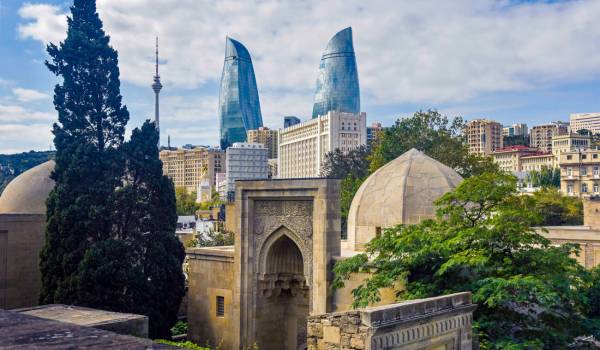
Baku
Karabakh is the most ancient region of Azerbaijan and the Caucasus. Karabakh is rich in rich in nature, flora, and fauna. There are countless historical monuments in Karabakh and they are proof of the antiquity of Azerbaijan.
Jabrail is located in the south-east of the Lesser Caucasus Mountains, in the Geyan plain, and in the Karabakh range. The region borders the Islamic Republic of Iran along the Araz River in the south. The area is 1049 m², the territory is mainly mountainous. However, there were once dense Tugay forests on the banks of the Araz River.
Jabrail region is considered to be one of the regions of Azerbaijan that rich in historical monuments, as well as religious monuments. Khudafar's bridge, which is considered to be a symbol of a united Azerbaijan, is located in the Jabrail region.
Khudafar's bridge, which is considered to be a symbol of a united Azerbaijan, is located in the Jabrail region. Khudafar Bridge was built on the caravan road connecting the medieval cities of South and North Azerbaijan. The first information about this bridge dates back to the VIII-IX centuries. It is also of great military-strategic importance. The first bridge, built in the narrowest, rocky part of the Araz River, started functioning from the end of the 8th century to the beginning of the 9th century and functioned till the 19th century. The brick bridge was built in the 12th century.
Jabrail region, rich in underground resources and having a mysterious natural beauty, was occupied by Armenian invaders on August 23, 1993, and was completely destroyed. However, history was rewritten. On October 4, 2020, the city of Jabrail was liberated from occupation. Today, there is not a single safe building or infrastructure in the territory of Jabrayil.
14 Oriental Chinar trees of a large diameter and other valuable trees aged 200-1600 in the region, as well as a cave called "Palace of Giants" in the village of Dagtumas, were protected as a natural monument.
In the Jabrail region, forests of valuable tree species, rich underground resources, unique mysterious corners of Diridag, distinguished by its unusual flora and fauna, mineral-rich water sources, were destroyed by the Armenian occupiers. During 2006-2007, Armenians set fires on more than 16,000 hectares of the region.
Jabrail is one of our regions that rich in construction materials. There are Tulus tuff, Chakhmagchay, Soltanli construction sand, Garajalli clay, Goyarchin-Veysalli volcanic ash, Minbashli drywall, Agtepe limestone, Jafarabad sand-gravel mixture, Chaxmagkaya chalcedony deposits in the area. During the years of occupation, these natural resources were looted.